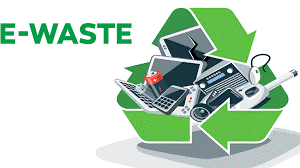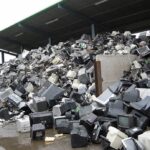By Saundra McBrearty, CVA, Outreach and Volunteer Specialist
 If you are like me these days, you spend lots of time at home using electronic devices. Also, I am taking on the chore of clearing out household clutter. So, what are we to do with old and unwanted electronics when we are ready to get rid of them?
If you are like me these days, you spend lots of time at home using electronic devices. Also, I am taking on the chore of clearing out household clutter. So, what are we to do with old and unwanted electronics when we are ready to get rid of them?
Don’t throw electronics in the garbage! Instead, repair, sell, donate, or recycle your old electronics.
Here’s why:
Old computers, monitors, keyboards, printers, TVs, cell phones, and other electronic devices, referred to as “e-waste”, contain dangerous lead, mercury, arsenic, cadmium, and more. These metals make up circuit boards and electrical parts such as computer chips, monitors, and wiring. Many electronics also include flame-retardant chemicals that might pose potential health risks when exposed.

When these elements are safely encased in our computers and devices, e-waste dangers aren’t problematic. However, when devices break, they leak and contaminate the surrounding environment. Over time, the toxic chemicals of a landfill’s e-waste seep into the ground, enter the water supply, or escape into the atmosphere, affecting the health of nearby communities.
People discuss the serious aspects of this pollution in terms of “bioaccumulation” and “biomagnification”. How are these terms different? Bioaccumulation occurs when people, plants and animals build up levels of toxic substances in their bodies faster than they can get rid of them. Biomagnification occurs when toxin levels accumulate within the food chain. For example, plankton might absorb low levels of mercury. Then fish that eat large amounts of plankton ingest an even larger, unhealthier dose. The problem continues as birds or humans eat the mercury-tainted fish. This problem is already occurring in much of the United States’ wild-caught fish supply.

According to the EPA, of the roughly 2.25 million tons of used and unwanted electronics each year, only 18% is collected for recycling and roughly 82% winds up in landfills. Clearly, as more and more e-waste is accumulating every year with our quickly developing technology, taking the steps to responsibly dispose of electronic equipment is a growing and important concern.
Click the link for businesses in Delaware County who accept and responsibly recycle e-waste.








